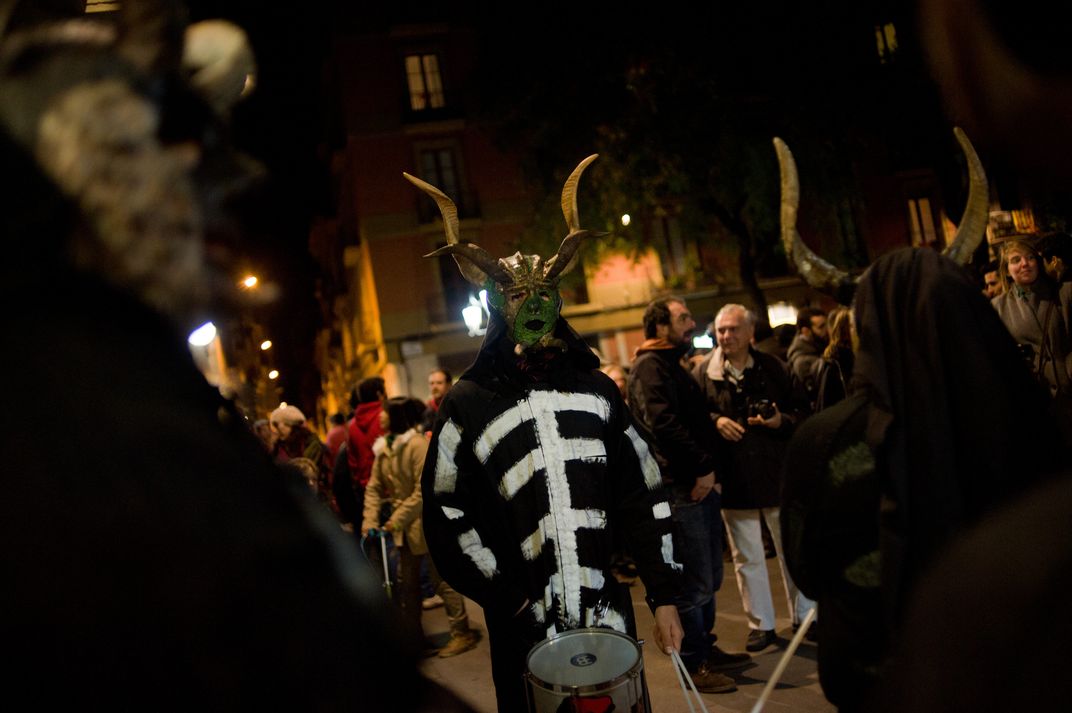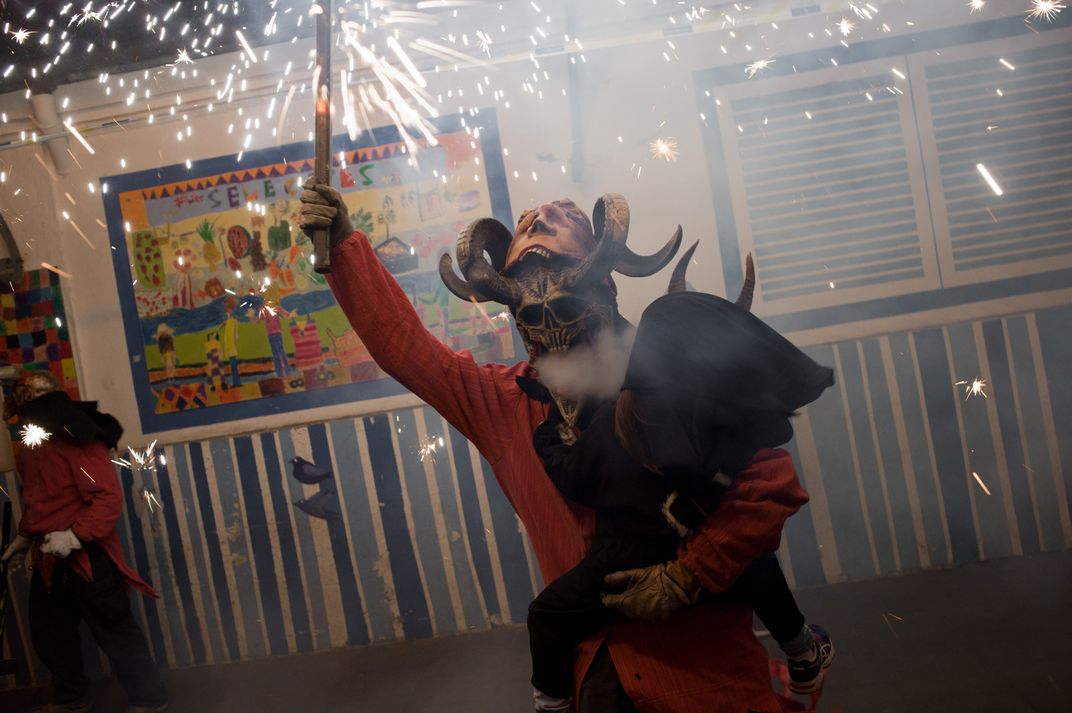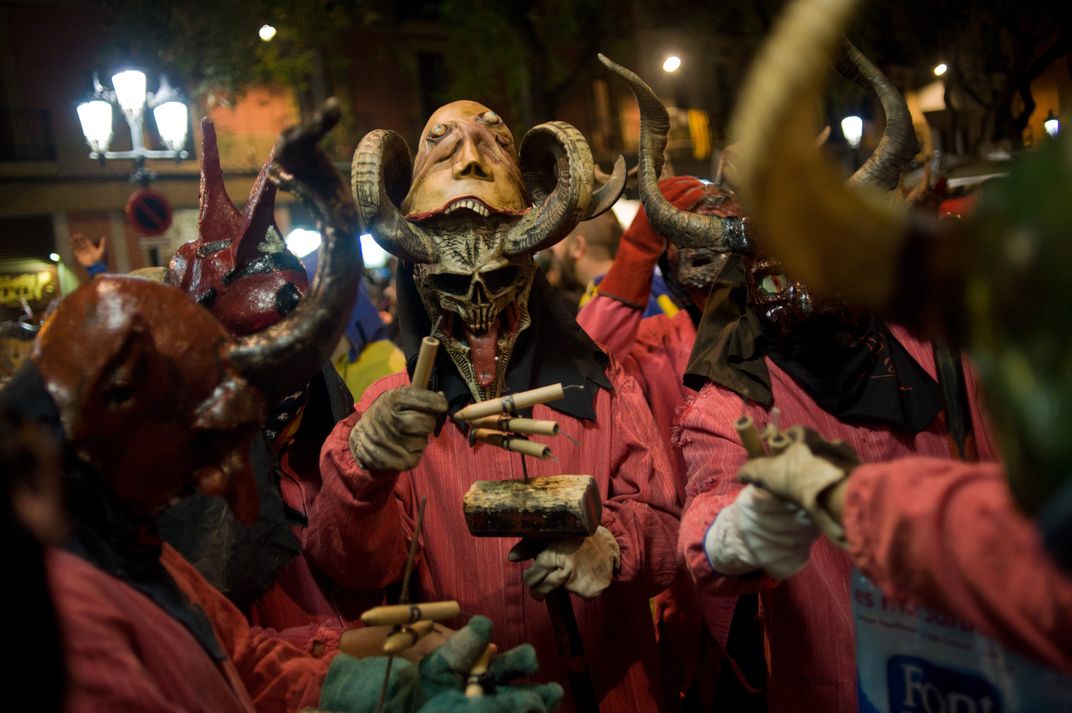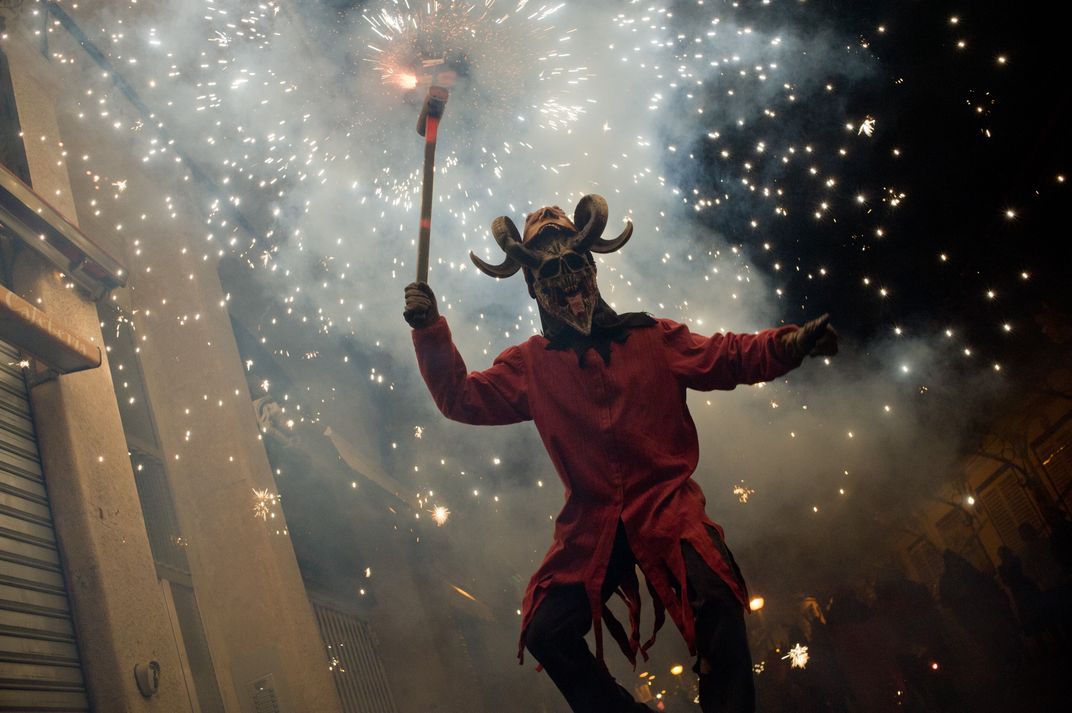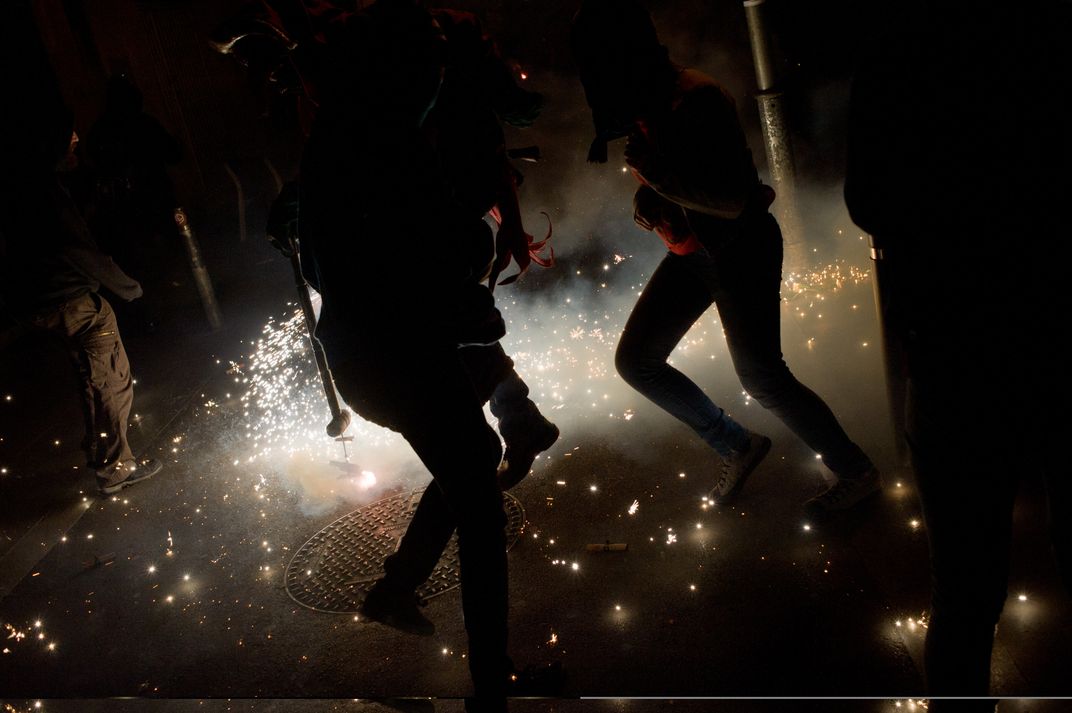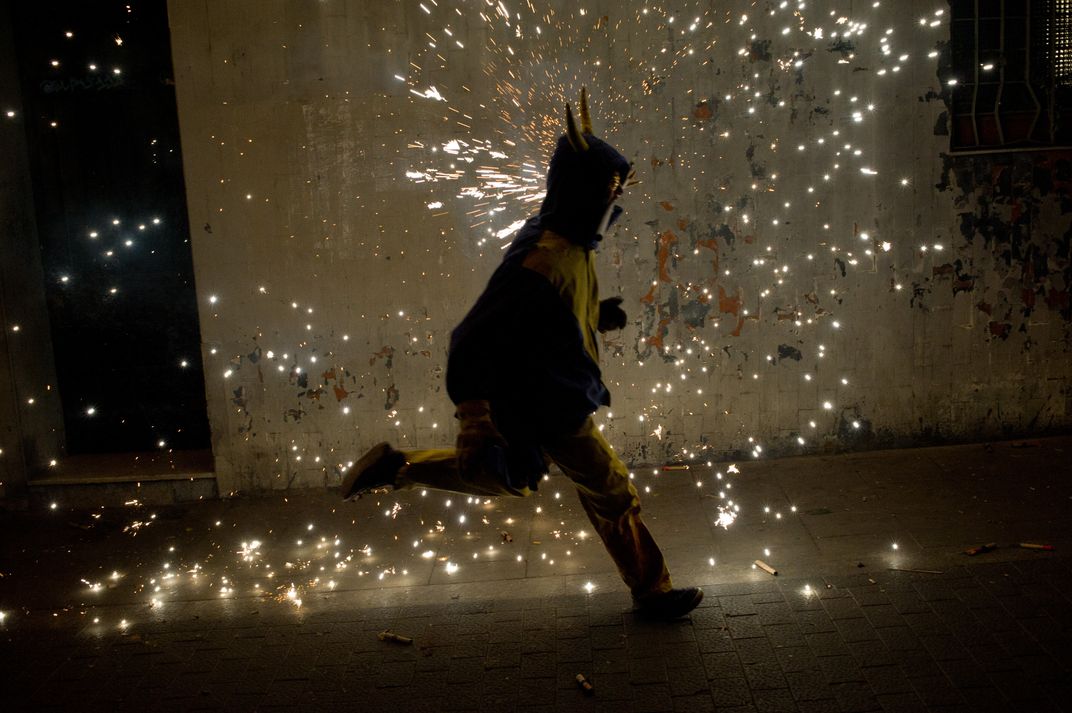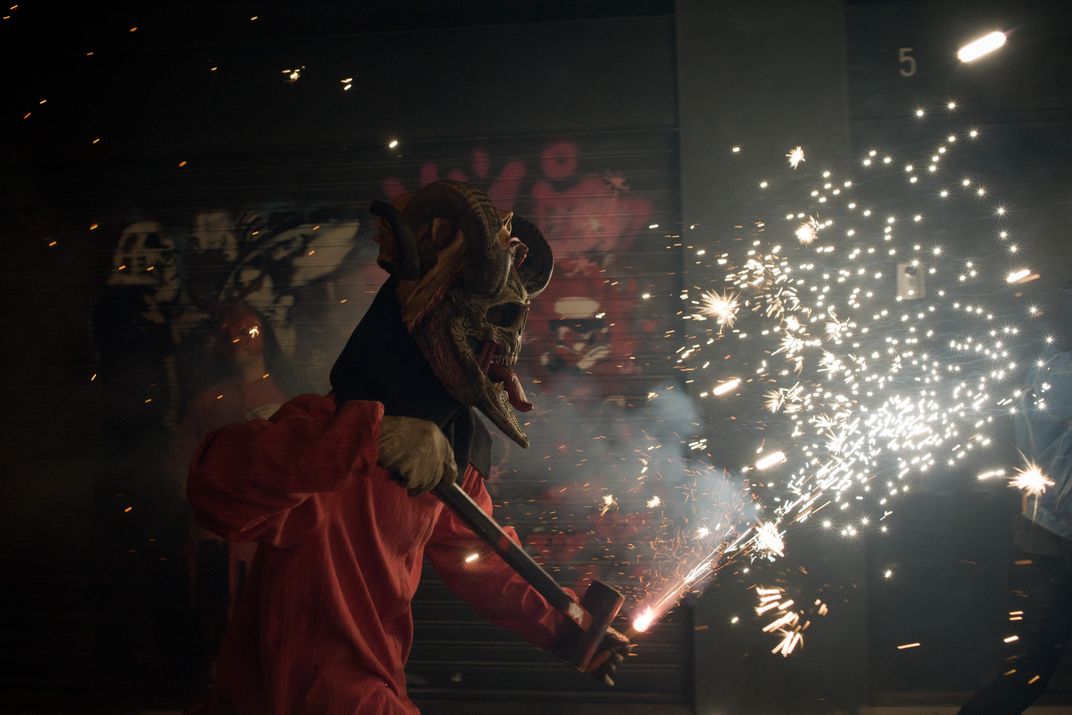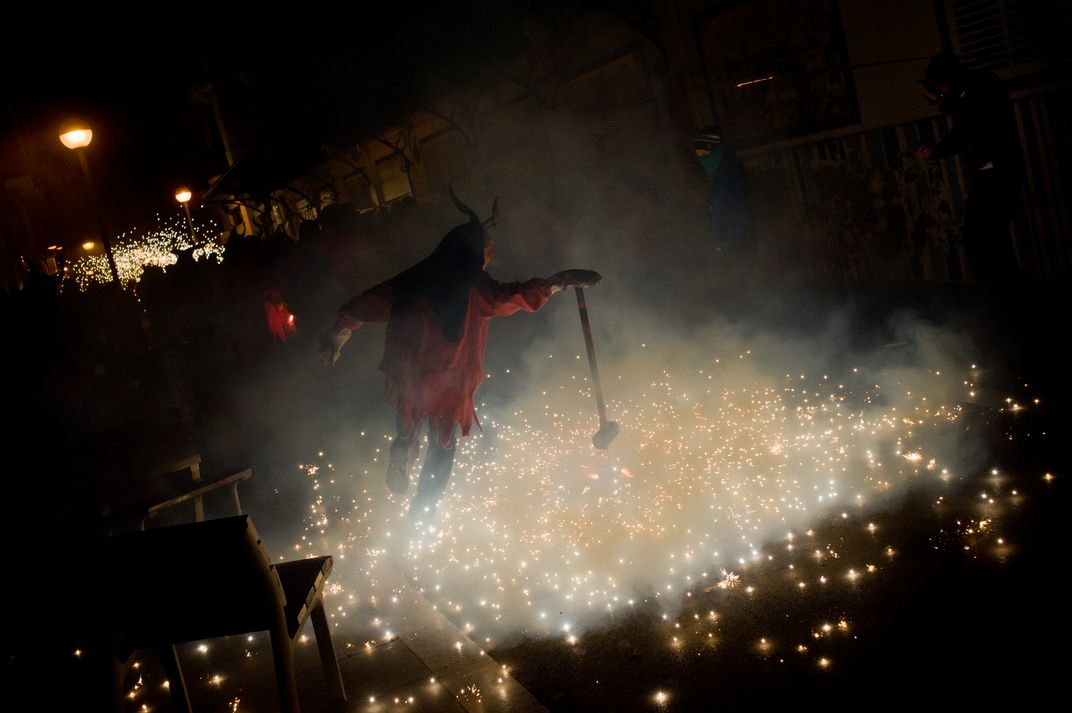One Night Each Winter, Devils Run Through the Streets of Barcelona
Since the early 1990s, Barcelona’s winter bonfire festival has celebrated the intersection of Catalan and Majorcan cultures
Barcelona's Gràcia district, home to Antoni Gaudí’s Park Güell and Casa Vicens, is no stranger to the unusual. So when bonfires blazed and devils roamed the district’s quaint, narrow streets last weekend, the spectacle didn't seem out of the ordinary.
The three-day celebration now held during the last weekend of January began with one dad's nostalgia. In January 1992, Antoni Torrens, who hails from Sa Pobla on the island of Majorca, decided he didn't want his sons studying in Barcelona to miss the Festival of Sant Antoni, the patron saint of animals. In Majorca, the celebration is two-pronged: On January 16, islanders remember the saint's triumph over the temptations of evil, dressing up as demons and dancing around a bonfire, symbolizing the interplay of good and evil. On the 17th, they commemorate the saint with mass and the blessing of animals by local priests. Torrens decided to bring the first part of the celebrations to Gràcia, lighting a bonfire—fogueron—in Plaça del Diamant, one of the district’s many squares.
Since then, the festival, called some version of La Festa dels Foguerons de Sa Pobla a La Gràcia, has morphed into an exchange of Catalan and Majorcan cultures. A local committee oversees the proceedings, and many Majorcans travel to participate in the weekend festivities. On Thursday and Friday before the last weekend of the month, the festival warms up with food tastings and performances by local and Majorcan cultural groups. Traditional Majorcan food offerings include sobrassada, or pork sausage, and olive oil biscuits. Beginning in the evening on Saturday, more groups—among them Majorcan bagpipers and Catalonian castellers, or groups of people that build human towers—perform in Plaça de la Vila before proceeding en masse to Plaça de la Virreina. Masked devils from Barcelona and Majorca lead the way with the correfoc, or fire run, rushing through the streets and setting off fireworks. Following the procession, bonfires ignite in squares across the district and the revelry continues with a concert and dance.
